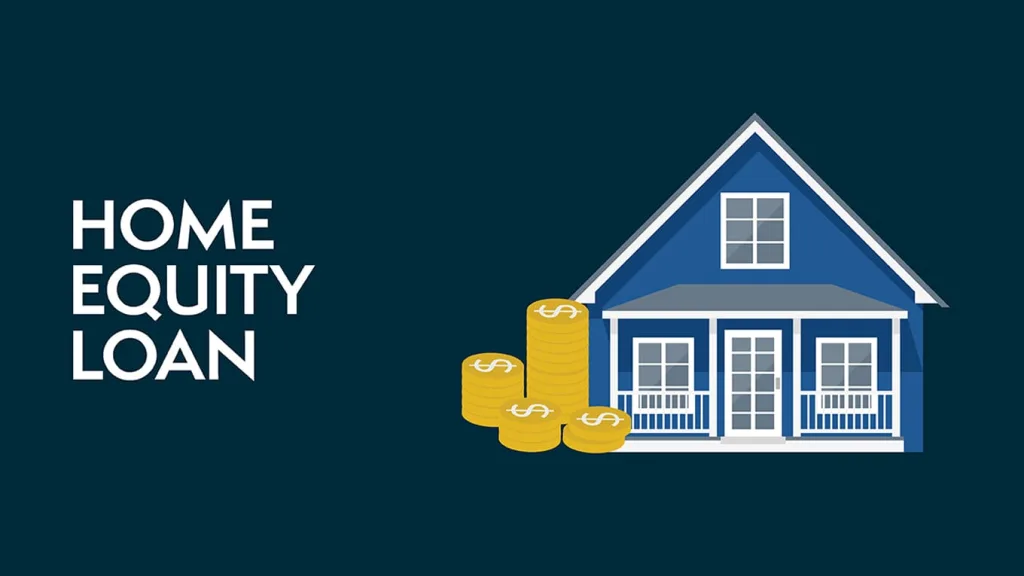Homeowners can borrow against their house’s equity via home equity loans.
Fixed Rate Home Equity Loan shares the details on what it is, its operational structure and types.
A Home Equity Loan: What Is It?
One form of consumer debt is a home equity loan, sometimes referred to as an equity loan, home equity installment loan, or second mortgage. Homeowners can borrow against the equity in their houses using home equity loans. The loan amount is determined by subtracting the homeowner’s outstanding mortgage balance from the home’s current market value. While home equity lines of credit (HELOCs), the common alternative, typically have variable rates, home equity loans typically have fixed rates.
Important Takeaways
Talking of Fixed Rate Home Equity Loan. One form of consumer debt is a home equity loan, sometimes referred to as a second mortgage or a home equity installment loan.
Homeowners can borrow against their house’s equity via home equity loans.
The amount of a home equity loan is determined by subtracting the homeowner’s outstanding mortgage balance from the home’s current market value.
Fixed-rate loans and home equity lines of credit (HELOCs) are the two types of home equity loans.
While HELOCs give borrowers ongoing lines of credit, fixed-rate home equity loans give borrowers a single lump sum payment.
The Operation of a Home Equity Loan
If we speak about the Fixed Rate Home Equity Loan. The term “second mortgage” refers to the fact that a home equity loan is essentially similar to a mortgage. The lender uses the equity in the house as collateral. The combined loan-to-value (CLTV) ratio of 80% to 90% of the home’s appraised value will determine how much a homeowner can borrow. Naturally, the borrower’s credit score and payment history also affect the loan amount and interest rate.
Discrimination in mortgage lending is prohibited. There are things you can do if you believe you have been the victim of discrimination because of your age, national origin, race, religion, sex, marital status, usage of public assistance, or handicap. Making a report to the U.S. Department of Housing and Urban Development or the Consumer Financial Protection Bureau is one such step.
Like conventional mortgages, traditional home equity loans have a predetermined payback period. Principal and interest are paid by the borrower in regular, scheduled installments. Like any mortgage, the house may be sold to cover the outstanding balance if the loan is not repaid.
You can turn the equity you’ve accumulated in your house into cash with a home equity loan, particularly if you use the money for improvements that raise the property’s worth. Always keep in mind, though, that you are risking losing your house if real estate values drop, and you may find yourself in debt.
If you decide to move, you may not be able to move or you may lose money on the sale of the house. Additionally, avoid the temptation to accrue more credit card debt if you are taking out a loan to pay it off. Consider your choices before taking any action that could endanger your home.
Particular Points to Remember
If you’re thinking about Fixed Rate Home Equity Loan. After the Tax Reform Act of 1986, home equity loans became extremely popular because they gave consumers a means to circumvent one of its key provisions, which was the removal of interest deductions on the majority of consumer purchases. One significant exception was preserved by the act: interest on residence-based debt.
However, the Internal Revenue Service (IRS) states that unless “they are used to buy, build, or substantially improve the taxpayer’s home that secures the loan,” the Tax Cuts and Jobs Act of 2017 stopped the deduction for interest paid on home equity loans and HELOCs until 2026. For instance, the interest paid on a home equity loan used to pay for a child’s education tuition or to consolidate debts is not tax deductible.
Just like with a mortgage, you can request a good faith estimate, but first, honestly assess your financial situation. In order to save money, Casey Fleming, branch manager at Fairway Independent Mortgage Corp. and author of The Loan Guide: How to Get the Best Possible Mortgage, advises applicants to have a clear understanding of their credit and house worth before applying. Particularly on your home’s assessment, which is a significant cost. The money is already spent if your appraisal is too low to sustain the loan, and there are no reimbursements for not meeting the requirements.
Verify with your bank that the monthly payments for the home equity loan would be less than the total of all of your present debts before signing, particularly if you’re using it to consolidate your debt. Your new loan’s term may be longer than your current ones, despite home equity loans’ lower interest rates.
HELOCs vs. Home Equity Loans
Home equity loans give the borrower a single, lump-sum payment that is paid back over a predetermined length of time (usually five to fifteen years) at a predetermined interest rate. Over the course of the loan, the interest rate and payment stay constant. If the house on which the loan is based is sold, the entire loan amount must be paid back.
Similar to a credit card, a HELOC is a revolving line of credit that you can use as needed, pay back, and then use again for a period of time that the lender specifies. After the draw time (five to ten years), there comes a repayment term (10 to twenty years) during which drawings are prohibited. Although some lenders provide HELOC fixed-rate options, HELOCs normally have variable interest rates.
Home equity debt types
You should remember the types of Fixed Rate Home Equity Loan. A home equity loan is a type of second mortgage that enables you to take out a lump sum payment using the value of your house as security. The funds can be used to pay for major bills, credit card debt consolidation, or home improvement financing. You immediately begin repaying your loan at a set interest rate after you receive it. This implies that throughout the duration of the loan, which may be up to 30 years, you will pay a certain sum each month.
Line of credit for home equity (HELOC)
During the initial “draw” phase, a home equity line of credit, or HELOC, functions more like a credit card that lets you make withdrawals from a revolving credit line. During this period, which is typically ten years, you will be able to withdraw money whenever you need it. The credit revolves and becomes available for use after the principal on the HELOC is paid down. Interest-only payments or principal and interest payments combined are the two draw period options available to you. The latter enables you to pay back the loan more quickly.
Because most HELOCs have variable rates, your monthly payment may increase or decrease throughout the course of the loan. Although they typically have higher interest rates, several lenders now offer fixed-rate HELOCs. The repayment period, which follows the draw period, is when the principle balance and any outstanding interest are due. Repayment durations, which can range from 15 to 20 years, are often longer than draw periods.
How may home equity be used most effectively?
Using your home equity for significant life costs that improve your overall financial situation can be a smart move. Home equity loans are frequently used for the following purposes:
- Making significant improvements to the house
- Combining credit card debt and other higher-interest debt
- Purchasing a vacation house or real estate investment
- Covering your own or a child’s college tuition or other costs
- Launching a company
- Emergency costs
- Covering the cost of a wedding
Because a home equity loan is paid out in one lump sum, it makes more sense for a big, fixed expense. A HELOC might be a better choice if your expenses are less and will be dispersed over a number of years, such continuing home improvement projects or college tuition payments.
Remember that you don’t have to spend your equity just because you can. For instance, using your house as collateral to pay for a wedding could endanger both your house and your finances in the future.
What is a good rate for a home equity loan?
What is a good rate for a home equity loan? A good HELOC rate is what?
In general, a rate below the national average is regarded as a favorable rate for any kind of loan. Usually reserved for borrowers with lower loan-to-value (LTV) ratios and higher credit scores, the rates listed on lenders’ websites are the best available rates. Some lenders reserve their highest rates for home equity products for borrowers who agree to set up automatic withdrawals or payments.
How quickly can I access the equity I’ve accrued?
Before homeowners may apply for a home equity loan product, lenders often ask that they have at least 20% equity. Stated differently, this indicates that an 80 percent LTV ratio is required. To calculate your LTV ratio, take the amount of your outstanding mortgage balance and divide it by the appraised worth of your house.
How rapidly you build (or lose) equity depends on a number of factors, including home values and loan terms. You can accumulate equity far more quickly when property values increase, as they have in recent years. You risk losing equity and going “underwater” on your mortgage, meaning you owe more than the value of your house, if the market plummets, as it happened during the Great Recession.
Benefits and Drawbacks of Home Equity Loans
Home equity loans provide several important advantages, such as lower costs, but they can have disadvantages.
Benefits
- For responsible borrowers, home equity loans can be useful resources and offer a convenient source of funding. Low interest rates and potential tax deductions make home equity loans a wise choice if you have a consistent, dependable source of income and are confident in your ability to repay the loan.
- Since a home equity loan is a secured obligation, many consumers find it easy to get. To ascertain your creditworthiness and the CLTV, the lender orders an appraisal of your house and does a credit check.
- A home equity loan’s interest rate is significantly lower than that of credit cards and other consumer loans, even though it is greater than that of a first mortgage. This clarifies why paying off credit card debt is one of the main reasons why people take out fixed-rate home equity loans secured by the value of their homes.
- If you know exactly how much you need to borrow and for what purpose, home equity loans are usually an excellent option. At closing, you receive the entire amount that was promised to you. According to Richard Airey, senior loan officer of Integrity Mortgage LLC in Portland, Maine, “home equity loans are generally preferred for larger, more expensive goals like remodeling, paying for higher education, or even debt consolidation because the funds are received in one lump sum.”
Drawbacks
- The primary issue with home equity loans is that, to a borrower who may have become trapped in a never-ending cycle of spending, borrowing, spending, and more debt accumulation, they may appear to be an all-too-easy fix. Reloading, which is essentially the practice of taking out a loan to pay off existing debt and free up new credit that the borrower then utilizes to make additional purchases, is a phrase that lenders have used to describe this situation because it is so prevalent.
- Reloading creates a vicious cycle of debt that frequently persuades consumers to take out home equity loans, which provide a sum equal to 125% of the borrower’s home equity. Higher costs are frequently associated with this kind of loan: The loan is not entirely secured by collateral as the borrower has taken out more money than the residence is worth. Additionally, be aware that interest paid on the loan balance that exceeds the home’s worth is never tax deductible.3.
- Because you only receive the payoff once and are unsure of your future loan eligibility, there may be some temptation to take out more money than you need right now when applying for a home equity loan.
- It could be time for a reality check if you are considering taking out a loan that is greater than the value of your house. When you only owed 100% of the equity in your house, were you unable to make ends meet? If so, expecting to be better off after increasing your debt by 25% plus interest and fees is probably impractical. This may turn into a precipice leading to foreclosure and bankruptcy.
Conditions for Home Equity Loans
Most borrowers will typically need the following in order to be approved for a home equity loan, though each lender has different requirements:
- More than twenty percent of their home’s value is equity.
- Income history that can be verified for at least two years
- A credit score of 600
- A home equity loan from a lender that specialized in high-risk borrowers would likely have a significantly higher interest rate, even if it is still feasible to get approved without fulfilling these standards.
What’s the Process for a Home Equity Loan?
A home equity loan is a loan with a fixed amount that is paid back over a predetermined time period and is secured by the equity you have in your house. You risk losing your house to foreclosure if you are unable to repay the loan.4.
Are Loans for Home Equity Tax Deductible?
If the money from a home equity loan is used to “buy, build, or substantially improve” your house, the interest paid on the loan may be tax deductible. However, itemizing to deduct the interest paid on a home equity loan might not result in savings for the majority of filers due to the Tax Cuts and Jobs Act’s passage and the higher standard deduction.2.
How Much Can I Get for a Home Equity Loan?
The amount that brings a well-qualified borrower’s combined loan-to-value (CLTV) down to 90% or less is the home equity loan limit. This implies that the sum of the mortgage balances, any outstanding home equity loans, any current HELOCs, and the new home equity loan cannot exceed 90% of the home’s appraised value. For instance, if authorized, a homeowner with a $500,000 property appraisal and a $200,000 mortgage balance could obtain a home equity loan of up to $250,000.
Is It Possible to Have a Home Equity Loan and a HELOC at the Same Time?
Indeed. If you have the equity in your house, the income, and the credit to be approved for both, you can have a home equity loan and a home equity loan at the same time.
A HELOC Loan: What Is It?
There is no HELOC loan. The phrase is a mixture of two distinct loan products that are now available: home equity loans and home equity lines of credit (HELOCs).
The Bottom Line
For people who know exactly how much equity they need to withdraw and who prefer the stability of a fixed interest rate, a home equity loan may be a more prudent financial option than a home equity loan. while financing home renovations or debt consolidation, borrowers should exercise prudence while taking out home equity loans. If too much equity is taken out, it is simple to get underwater on a mortgage, which would leave a borrower with damaged credit and a foreclosed home.




